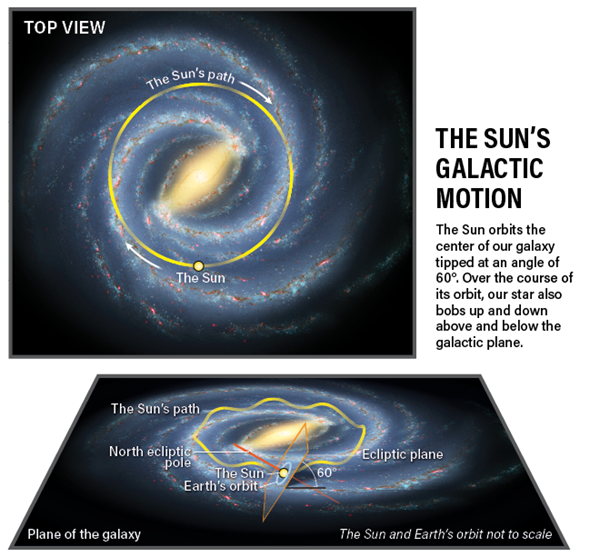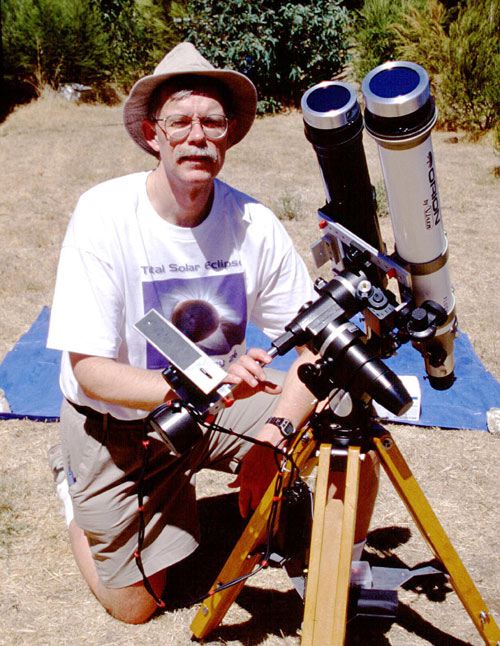Key Takeaways:
- The Sun orbits the Milky Way's center in a roughly circular path.
- This orbit takes about 230 million years to complete.
- The Sun's orbit is tilted 60 degrees from the galaxy's plane.
- The Sun also moves up and down through the galaxy's disk.
Q: In which direction, with respect to its axis of rotation, does the Sun move through the Milky Way?
A: If you imagine looking down on the Milky Way, the Sun is located nearly 27,000 light-years from the center, about halfway between the center and the edge of our disk-shaped galaxy. Looking from the side, the disk is relatively flat and the Sun is currently located about 55 light-years above the plane of the galaxy’s disk. Over time, the Sun orbits the center of the galaxy, sketching out a roughly circular path (again, looking down from above) that takes about 230 million years to complete at a speed of about 137 miles (220 kilometers) per second.
With respect to its own axis of rotation, the Sun is moving through the galaxy tipped at an angle of about 60° from the galactic plane. This also applies to the planets orbiting the Sun — just like the disk of our galaxy, if you were to look at our solar system from the side, the planets orbit the Sun in a relatively flat plane. Essentially, the Sun and the plane in which the bodies of the solar system orbit around it are both tilted forward by 60° as they move through the galaxy.
It’s perhaps also worth noting that the Sun doesn’t appear to trace a flat circle — in one plane only — as it moves around the galaxy. The Sun actually appears to bob up and down through the disk (we are up right now, above the plane of the disk) as it moves, with a period of about 60 million years.











